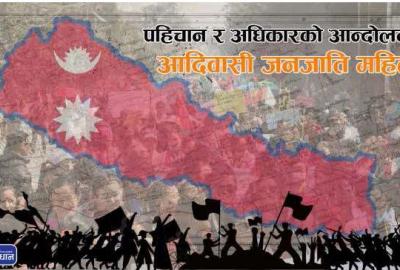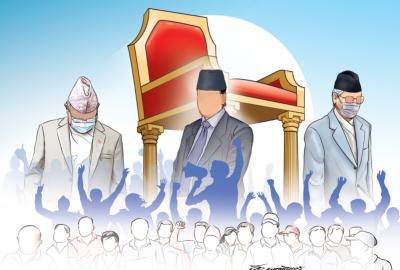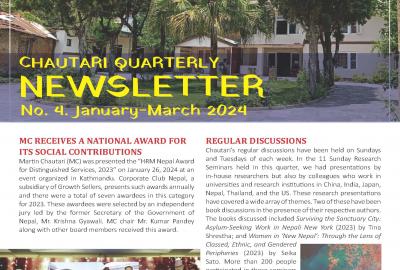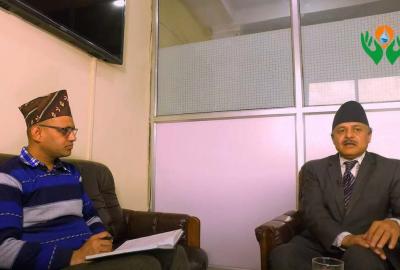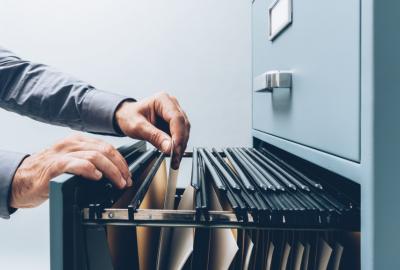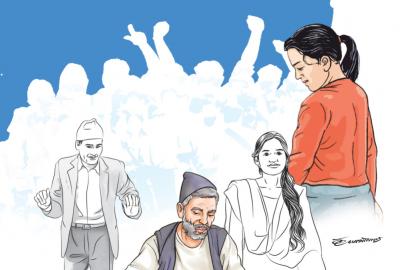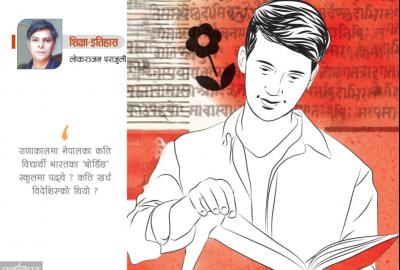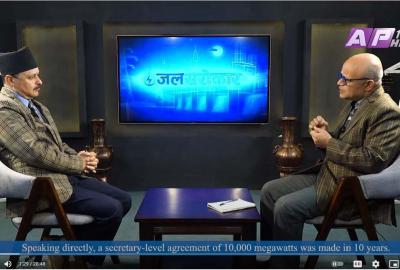We don’t have a strong tradition of holding personal papers in public archives or repositories.
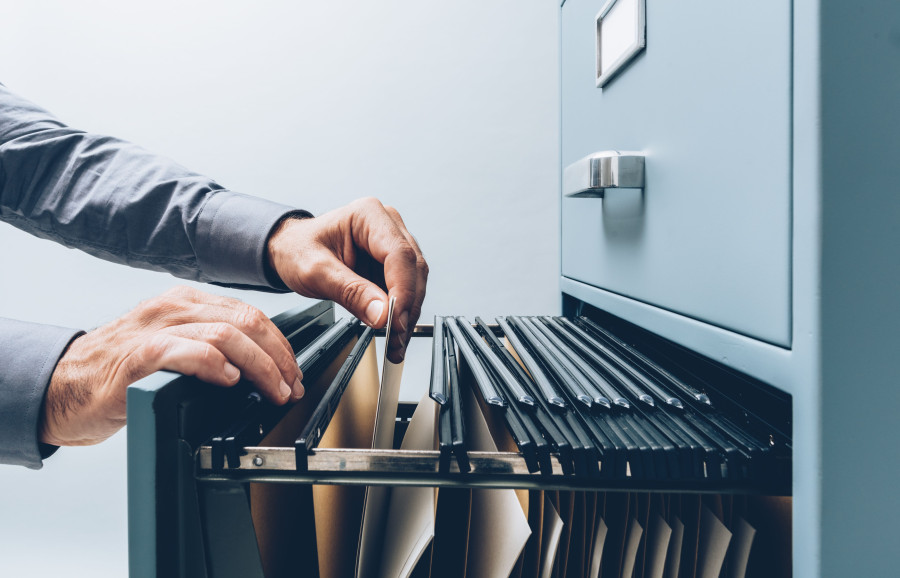
Working on and off for almost a decade, the historical sociologist Lokranjan Parajuli and I were able to put together articles written by the political and literary historian Leelanateshvar Sharma Baral (1923-97) on domestic politics and the foreign policy of Nepal during the Panchayat regime in the form of a 500-page book (Autocratic Monarchy: Politics in Panchayat Nepal, 2012). Baral–who often signed his official name as LS Baral but chose to write literary history and criticism under his pen name Isvar Baral–wrote these 13 articles (one was co-written) between 1960 and 1982. In the book, Parajuli and I wrote a 44-page introduction that sketched Baral’s life and work, highlighting “his educational, research and work record on literature, history and politics of Nepal.”
Although Baral’s family had a collection of his private papers, we did not have the opportunity to read through them when we were writing the introduction in 2012. Hence, we stated that since “we have not had a chance to do research on his personal papers, our narrative is based on published sources and some interviews.” Some of these published sources were letters that Baral had written to his contemporaries in Nepal while he was working or studying abroad.
In May 2019, Baral’s family gifted his personal papers to the Martin Chautari Library. By early 2023, these papers had been digitised but due to the lack of dedicated staff who can do such work, they have not yet been properly catalogued and indexed. Parajuli and I have looked through the digital files of these papers for two purposes. One, we were looking for unpublished works by Baral that could be published. One such piece written in Nepali, on the mid-19th century politician Mathbarsingh Thapa and his trip to Calcutta, was found. In fact, four different drafts of this text were in the collection. Parajuli was able to compare the four versions, identify the incomplete most revised draft, and finally put together a version of this text by amalgamating some paragraphs from earlier versions with the most revised draft. The resulting text was published in Samaj Adhyayan 18 in 2023.
In addition, we have thus far found some correspondence related to the work of the Nepal Sanskritik Parishad (NSP), an organisation founded in Kathmandu in 1951 to promote research in Nepal. Baral was affiliated with NSP as its office secretary and the editor of its journal Nepal Sanskritik Parishad Patrika, whose first issue was published in 1952. Parishad was active from 1951 to 1964 and Baral’s active role in it lasted between 1951 and late 1956, when he took up a faculty position at the Indian School of International Studies in New Delhi. Among his personal papers, we have thus far been able to find the appointment letter the Parishad gave to Baral in 1951 and some other mundane correspondence, but not much else related to the organisational dynamics of NSP. Nevertheless, these unpublished texts, in part, have helped me write a full-length article on the short life of the NSP.
I dwell on the existence of LS Baral’s personal papers to highlight the fact that there are many such collections in our midst. Most of them are being held by family members of the departed protagonists or the senior individuals who are still with us. If we as a society are to become more capable of writing various types of histories (especially of the post-Rana period since 1951), it will be absolutely essential to figure out ways to make personal papers available in public archives.
But what are personal papers? Most families have various types of financial documents in their collection. These include various deeds, ansabanda (property division) documents, loan and payment receipts, tax-related records, bills and bank statements. These are parts of personal papers, for sure. But a broader definition would suggest that personal papers include correspondence of various types, photographs, identification documents, diaries, personal calendars, travel notes, writings done for schools and various other records.
The personal papers of artists and architects would include drafts and final drawings of their artistic creations, whether they are paintings or buildings. Such papers of writers would include various drafts of their written work. Personal papers of researchers would include their research notes, field notes, drafts of articles they have published (or those that remained unpublished), and even drafts of texts written by others. These items, for the most part, are generated in the course of the concerned person’s personal and professional passage through life.
In Nepal, we don’t have a strong tradition of holding personal papers in public archives or repositories for various reasons. First, for much of the Rana era, most of the population remained illiterate and hence, while their families held financial documents, the more expansively understood personal papers were simply not generated by most Nepalis. Second, in the post-1951 decades, this began to change gradually as writing became a part of the lives of more and more Nepalis. But writing was also dangerous during both the Rana and the Panchayat era (1960-90). The personal papers of educated individuals deemed to be opponents of the regimes had to be mostly hidden because they could be used against them by the repressive regimes. Hence, the conditions for the generation and passage of such personal papers to public repositories have not existed for too long in our country.
Third, while most Nepalis today own personal papers in various volumes, our society does not have well-resourced archives in which they can be properly deposited. More and more Nepalis who came of age in the 1950s/1960s have either retired or have already passed away. Even if their families decide to donate their personal papers to existing archives or libraries, such entities are institutionally challenged to properly process those papers and make them available to the public. Many archives and libraries do not have the needed space to hold such materials; others do not have access to the technical know-how to process them.
Fourth, most libraries and archives do not have sufficient financial resources to do such work. In this connection, it is important to note what the chief executive of Patan-based Madan Puraskar Pustakalaya (MPP), Shamik Mishra, told me. He said that MPP can archive personal papers provided that the concerned donors or some third party are willing to secure the financial resources needed to process them for use by members of the public.
Finally, it would be important to recognise that just enabling some archival entities in the Kathmandu Valley so that they can hold personal papers is simply not enough. As has been persuasively argued by historian Yogesh Raj and MPP archivists Deepak Aryal and Rajeev Singh in the booklet Sthaniya Abhilekhalayako Bato (2079 BS), what we need is a national network of local archives, each of which capable of holding personal papers and
many other archival records. Needless to say, local archives should be supported both by public and private resources so that they become functionally useful to researchers and members of the public. There are many examples of such support in other countries. We could learn from them.
Published at : March 28, 2024
Source: https://kathmandupost.com/columns/2024/03/28/on-archiving-private-papers
